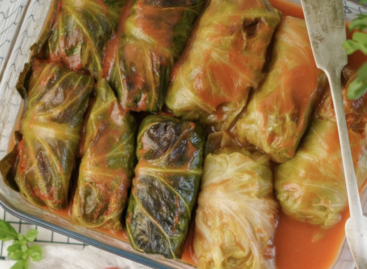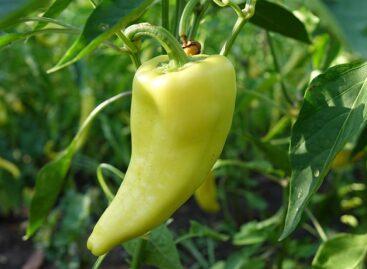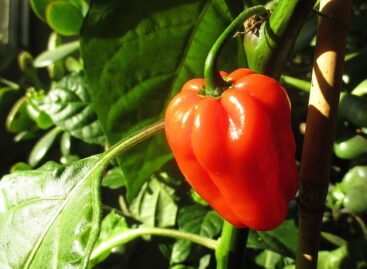Life, strength, paprika
Have you ever woken up sweating in the middle of the night from your worst nightmare? This is how Hungarian chefs would feel if there were no more paprika. This ingredient should never be missing from our kitchen. Ground, fried, boiled, whatever we want!

(Photo: Pixabay)
Although paprika originally comes from South America, it has now become an unavoidable component of Hungarian cuisine and thus Hungarian identity. Chicken with paprika, potatoes with paprika… everyone knows that these are Hungarian. And Albert Szent-Györgyi took care of this in the 1930s, when he received the Nobel Prize for his research, for which he extracted vitamin C from peppers. Because it’s full of it. In addition, it has a high fiber content and contains vitamins B6, E and A, as well as folic acid.
It is almost impossible to count how many types of peppers exist worldwide, from very small, hot types to huge, meaty varieties. Soon there will also be a KMÉ trademark among them.
Let’s take a look at the ones that we can easily buy at home!
You don’t need to introduce the TV, i.e. the pepper to be filled, to anyone. It’s best raw, with a slice of buttered bread, but it’s usually stuffed with minced meat and it’s also included in the stew.
Kapia peppers are best slightly burnt, a great ingredient for grilling. It is also customary to sell it preserved in oil, but kápia is also the basic ingredient of ajvár, i.e. fried paprika cream.
Green, yellow and red bell peppers have slightly different flavors. This thick-fleshed pepper is mostly used in Asian-inspired dishes, but it’s also great stuffed with anything or thrown on the grill.
The Hungarian man who is strong and strong does not say no! At most, cut out the veins of the pepper and eat it without the seeds
By the way, the scientific name of the pepper is Capsicum. Capsicum refers to the certain spiciness that some people love, and others eat all peppers without seeds and veins just for the sake of safety. The substance called capsaicin is responsible for the strength of the pepper, based on this, the so-called Scoville scale can be used to measure how much it stings. Because there are also brutally spicy varieties. But Hungarians are mostly satisfied with dried cherry or pencil pepper, which is a frequent guest in fish soup and goulash. But the flawless, wrinkled peppers did not make any lecho taste even worse.
KMÉ
Related news
Stuffed cabbage is the most Christmassy dish of Hungarians
🎧 Hallgasd a cikket: Lejátszás Szünet Folytatás Leállítás Nyelv: Auto…
Read more >Foreign trade of green peppers has fallen, but its surplus has increased
🎧 Hallgasd a cikket: Lejátszás Szünet Folytatás Leállítás Nyelv: Auto…
Read more >Hungary is building on paprika: 10th place in Europe in fresh paprika exports, 5th in dried ones
🎧 Hallgasd a cikket: Lejátszás Szünet Folytatás Leállítás Nyelv: Auto…
Read more >Related news
Christmas shock in commerce: for the first time, we can pay with bank cards in fewer places
🎧 Hallgasd a cikket: Lejátszás Szünet Folytatás Leállítás Nyelv: Auto…
Read more >Hungarian Confectionery Manufacturers Association: trends in 2025 and prospects for 2026
🎧 Hallgasd a cikket: Lejátszás Szünet Folytatás Leállítás Nyelv: Auto…
Read more >Most grocery chains will be open until noon on December 24th
🎧 Hallgasd a cikket: Lejátszás Szünet Folytatás Leállítás Nyelv: Auto…
Read more >






